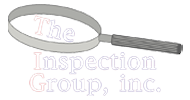Affordable Housing Best Practices
Affordable housing plays a crucial role in every community, and it’s an area that requires careful management to meet all necessary standards. Achieving file compliance and maintaining physical inspection standards can seem daunting, but with effective and efficient systems, these goals can be attained. This article outlines tips and affordable housing best practices to qualify applicants swiftly, meet compliance requirements, and maintain your properties at an exceptional standard.
Who Should Implement These Best Practices?
This guide is designed to assist all those involved in managing affordable housing communities. This includes managers, assistant managers, maintenance staff, supervisors, and property owners. By incorporating these affordable housing best practices into your operations, you can help ensure that your communities not only meet compliance standards but also provide high-quality, affordable homes for those who need them the most.
Why Compliance in Affordable Housing Matters
In the current climate, the demand for affordable housing is higher than ever. Thus, it is imperative for property owners and managers to understand and implement affordable housing best practices, particularly concerning file and physical compliance.
With the increasing incentives for developing affordable housing, more teams will be tasked with the responsibility of maintaining file compliance and preparing for physical UPCS/NSPIRE inspections. By understanding the most important elements to focus on, planning ahead, and allocating resources effectively, the audit and inspection process can be less stressful for everyone involved.
Management Tips for Affordable Housing
Efficiently Qualifying Applicants
- Develop a Standardized Screening Process
A uniform, well-documented applicant screening process helps ensure that you treat all applicants fairly and consistently. This process should include evaluating income, credit scores, rental history, and other relevant factors as per the Fair Housing Laws. - Clear Communication of Eligibility Criteria
Make sure that all applicants understand the eligibility criteria for your affordable housing properties. This not only includes income limits, but also other potential criteria like age or disability status. This can help to avoid unnecessary applications from ineligible individuals. - Use Technology to Streamline the Process
Leverage modern technology solutions to make the application and screening process faster and more efficient. Many software solutions offer features like online applications, automatic credit and background checks, and income verification, which can save significant time. - Quick Response Times
Aim to review applications and respond to applicants as quickly as possible. This will not only improve your relationship with potential tenants, but also help fill vacancies more quickly.
Organizing Files
- Create a Systematic Filing System
Having a well-organized, systematic approach to filing is essential. Whether you choose to organize files by property, by tenant, or by another system, make sure that it’s consistent across your entire portfolio. - Digitize Your Documents
Consider digitizing your files for easier storage, organization, and access. A good document management system can allow you to easily store, search, and retrieve documents as needed. - Keep Track of Key Dates
Create a system for tracking important dates such as lease renewals, scheduled property inspections, and due dates for reporting or compliance documents. This can help ensure that you never miss a deadline. - Regular Auditing
Make it a practice to audit your files regularly to ensure everything is in order and up to date. Regular audits can help you spot any potential issues and correct them before they become major problems. - Confidentiality and Security
Ensure that your filing system is secure and respects the privacy of your tenants. This is particularly important if you are storing files digitally. Always make sure that personal information is encrypted and access is restricted to authorized personnel only.
Implementing these tips can significantly improve the efficiency of your applicant qualification process and the organization of your files, making your operations smoother and more compliant with housing regulations.
Understanding HUD REAC Inspections and NSPIRE Changes
Comprehending the dynamics of HUD’s Real Estate Assessment Center (REAC) inspections and the forthcoming NSPIRE changes is a significant aspect of managing affordable housing properties. Here’s a rundown of what you should know and how these inspections might impact your affordable housing operations.
HUD REAC Inspections
The U.S. Department of Housing and Urban Development’s (HUD) REAC conducts physical inspections of properties that are owned, insured, or subsidized by HUD. The purpose of these inspections is to ensure these properties maintain a high level of quality and safety.
Here are a few key points to understand about REAC inspections:
- Inspection Areas: REAC inspections cover five major areas: site, building exterior, building systems, dwelling units, and common areas.
- Scoring System: The inspections are based on a scoring system, where each property can earn up to 100 points. Deductions are made for deficiencies, which are categorized as minor, major, or severe.
- Frequency: The frequency of REAC inspections depends on the previous inspection score. Properties that score 90 and above are inspected every three years, 80-89 every two years, and 60-79 annually. Properties that score below 60 may face more severe repercussions.
NSPIRE Changes
The National Standards for the Physical Inspection of Real Estate (NSPIRE) is a new model that HUD is developing to improve the condition of HUD-insured and assisted properties. NSPIRE aims to provide a more holistic, accurate, and useful analysis of a property’s physical condition. The changes coming with NSPIRE include:
- Inspection Areas: NSPIRE will focus on three key areas: Health and Safety, Functionality and Decency, and Condition.
- Scoring: NSPIRE is designed to ensure scores are more consistent and reflective of a property’s physical condition, moving away from the points-based system to a more detailed assessment of deficiencies.
- Inspection Frequency: Under NSPIRE, all properties will be inspected every three years, regardless of the previous score, ensuring consistent oversight and better maintenance.
- Demonstration Program: Before fully transitioning to NSPIRE, HUD has launched a demonstration program to test the model’s effectiveness. Property owners and managers can volunteer to be a part of this program to get a sense of the new expectations.
By understanding HUD REAC inspections and the upcoming NSPIRE changes, property managers and owners in the affordable housing sector can be better prepared for inspections, maintain high-quality living standards, and ensure compliance with federal regulations.
Creating Efficient Systems for Compliance
Creating effective systems for maintaining compliance can make your work as a property manager or owner significantly more manageable and cost-effective. Here are some steps you can take to create such systems:
- Develop a Compliance Calendar
One of the most efficient ways to track compliance-related tasks is by creating a calendar dedicated to these activities. This can include deadlines for reporting, property inspections, lease renewals, and other important dates. - Automate Where Possible
Investing in technology can drastically reduce the time and effort spent on compliance tasks. Property management software can automate many compliance-related tasks, including tenant screening, rent collection, maintenance requests, and financial reporting. - Regular Training
Ensure your team is up-to-date with the latest compliance requirements and industry best practices. Regular training sessions can help your staff understand their roles in maintaining compliance and how to execute their responsibilities effectively. - Maintain Detailed Records
Maintaining organized, detailed records is critical to demonstrating compliance during audits or inspections. Ensure all tenant files, maintenance records, financial documents, and other relevant paperwork are up-to-date and easily accessible.
Planning for Audit and Inspection Days
Audit and inspection days can be stressful, but with adequate preparation, they can go smoothly. Here’s how to plan:
- Regular Internal Reviews
Carrying out regular internal audits or inspections can help identify and rectify any potential issues before the official audit or inspection. - Have All Documentation Ready
Ensure all required documents are up-to-date and ready for review. This includes tenant files, maintenance records, financial reports, and any other relevant paperwork. - Understand the Inspection Criteria
Be familiar with what the auditors or inspectors will be looking for. If you are preparing for a REAC inspection, review the REAC inspection checklist. If you’re preparing for NSPIRE, familiarize yourself with the new criteria. - Conduct Pre-Inspection Maintenance
Before an inspection, make sure that all necessary maintenance tasks have been completed. This includes checking smoke detectors, ensuring emergency exits are clear, addressing any health and safety issues, and fixing any minor repairs. - Communicate with Your Tenants
Inform your tenants about the upcoming audit or inspection. Request their cooperation to keep their units clean and accessible on the day of the inspection.
Creating efficient systems for compliance and adequately planning for audit and inspection days can make these processes less stressful and more successful. These steps can help you maintain a high standard of compliance and potentially result in better audit and inspection scores.
Make Your Mark in Affordable Housing
The landscape of affordable housing presents both challenges and opportunities. While navigating the terrain of compliance standards, audits, and inspections might seem daunting, adopting these outlined strategies can significantly ease the process. Implementing efficient systems, harnessing technology, and maintaining a proactive approach towards compliance can lead to higher audit and inspection scores, better-managed properties, and improved tenant satisfaction.
Beyond compliance, the affordable housing sector is poised for growth. With increasing demand and a greater focus from both federal and state governments on affordable housing, there is potential for expansion and profitability. The influx of incentives for affordable housing development also opens up new avenues for investment.
However, the true opportunity in affordable housing lies in its societal impact. As managers, supervisors, and owners in this sector, your work plays a critical role in providing quality, affordable homes for those who need them. By maintaining high standards and ensuring compliance, you’re not just preserving properties — you’re fostering communities, empowering individuals, and contributing to the betterment of society at large.
So, despite the challenges, let’s stay positive, prepared, and proactive. Let’s work towards harnessing the full potential of the opportunities presented in the affordable housing sector and continue making a difference in our communities.





